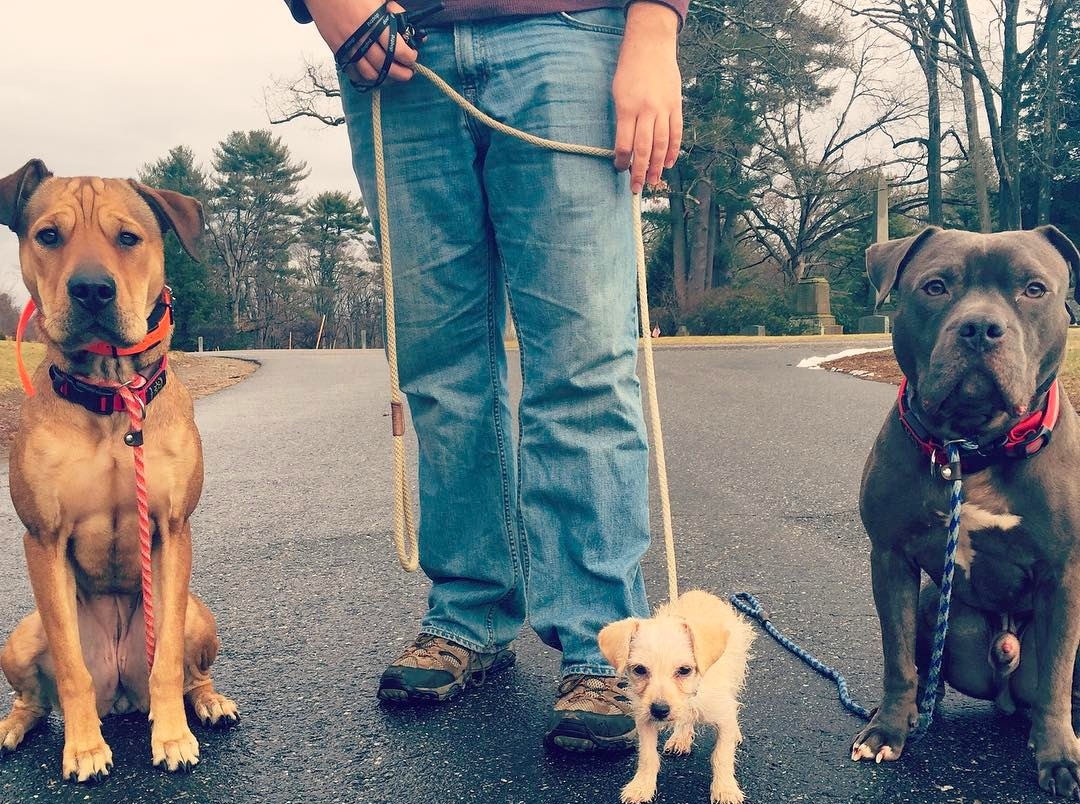Rules to Live by: Leash Etiquette in Public
Following proper leash etiquette is important for any situation, especially if your dog is away from home and in public. Here, they can encounter strangers and unfamiliar dogs that may instigate unwanted behavior. As responsible pet owners, its important to understand the value of excellent leash etiquette while in public with our dogs.
What can an owner do to protect their dog from instigating or receiving unwanted attention?
- Learn how to implement leash training. The leash is often seen as a tool to restrain a dog from getting loose, but most trainers will use it as a communication device where the dog is consistently rewarded for turning into leash pressure on the side of their neck or sitting in response to upward pressure. This approach provides the most control for the owner and most self-control for the dog.
- Learn how to interpret canine body language. A wagging tail is often seen as a sign of happiness but it merely means arousal. There is a ton of nuance to tail height, speed, the dog’s posture and facial expression to take into consideration when evaluating what a dog is communicating. Mastering the skill of reading that information will provide you the best insight into whether or not your dog is nervous or playful in a social situation, as well as grant some insight into the intentions of the other dog. This is how dogs provide or decline consent.
Rules To Live By- Leash Etiquette In Public
- No nose to nose greetings with other dogs
- No pulling on the leash since it promotes more impulsive behavior and makes leash communication irrelevant
- No barking or lunging as this can intimidate other dogs, making a fight more likely
Things that will make it harder for you to use leash tension as a language when in public
- Harnesses: These will make the tension more comfortable to ignore
- Flexi (retractable) leashes: When in public, dogs benefit from staying close to you with a predictable length of leash
Rules to make using leash tension as a language easier
- Use slip leads and other tools that should be taught by a professional
- Food (and don’t just practice in public, practice at home during mealtime)
- Starting small. Don’t rush into this – training your dog takes time
What to do if someone else’s dog gets out of control
- Keep your dog in a heel position when in public. It is very difficult to protect your dog from anything when your dog is in front of you.
- Place yourself between your dog and the approaching dog.
- Advocate for your dog verbally to the other handler. Confrontation is rarely comfortable, but if we don’t advocate for our dogs, it’s not their fault when they take matters into their own paws. Asking a human to control themselves or their dogs is always a reasonable request.
- Tools like the Pet Corrector (C02 air cartridge) can diffuse most situations. Simply aim it at the other dog’s face and spray. Your dog’s safety is always more important than the social implications of correcting someone else’s unruly dog. Many reactive dogs start off with an experience that they did not feel socially equipped for so you may be protecting your dog in more ways than one.
If you have other questions regarding training, contact Bryan at The Knotty Dog, or stop in and see one of our team members.






